Munkhtsetseg
Javkhaajav (mong. Жавхаажавын Мөнхцэцэг)
Text in English
wurde 1967 in "Ulaanbaatar" Hauptstadt der Mongolei geboren. Sie absolvierte ihr Kunststudium 1987 an der Hochschule der Bildende Künste in Ulaanbaatar. Danach geht sie nach Russland um weiter zu studieren. Von 1989 bis 1993 hat sie Akademie der Bildende Künste und Theater in Minks Hauptstadt von Weißrussland (Seit 1991 ist das Land ein eigenständiger Staat) studiert. Sie lebt in Ulaanbaatar mit seinem Mann Erdenebayar Monkhor, der auch ein internationaler anerkennte Kunstmaler ist.
Einzelausstellungen
2009 "The Silence of Healing at the Edge of the World", Teo + Namfah Galerie, Thailand.
- "Blue Sky die sich in der Nord-Face", Striped - Gallery, Tokyo, Japan.
2004 "Haus der Frau" Einzelausstellung Kunstgalerie von UMA (Union of Mongolian Artists), Ulaanbaatar.
1999 "Humhiin ordnii zuud", Einzelausstellung, Grant von "MFOS" Soros-Stiftung, Art Gallery, Ulaanbaatar.
1996 Einzelausstellung, Deutschland Botschaft, Ulaanbaatar.
1995 Einzelausstellung Kunstgalerie von UMA, Ulaanbaatar.
Zwei Personen Ausstellungen
2004 "Indiana Memorial Union" Galerie, Einzelausstellung. Bloomington, USA.
2003 "E & M" Einzelausstellung, Grant of Arts kommune der Mongolei, in Ulaanbaatar.
2000 "E & M" Nomad Kunst - Galerie, Ulaanbaatar.
Gruppenausstellungen
2010 "Smoke in the Brain" - "Red Ger" Gallery, in Ulaanbaatar.
2008 Taiwan-Fusing Biennale in Taiwan.
- Beijing International Art Biennale-3 in China.
2005 Beijing International Art Biennale-2, in China.
- Silk Road Contemporary Art Festival "Worth Ryder" Galerie, Berkeley, Kalifornien, USA.
2003 Die Beppu Asien Contemporary Kunstausstellung, B-CON plaza, in Japan.
2002 "Epic of Nomaden", Morgan Modern Art Museum, Korea.
2001 "Malerei" Som Arts, San Francisco.
- "Fortschritt der Frauen der Welt", internationale Ausstellung, Lobby des UN-Center, New York, USA.
2000 Rockville Abteilung Center Exhibition, Art Gallery Maryland, USA.
- "Neun Schatz" Ausstellung, Fraum Museum, Bonn Deutschland.
- "Schamane des Dschingis Khan"-Ausstellung in Seoul, Korea.
- Ausstellung der mongolischen Künstler, Beijing, China.
- "00-87"-Ausstellung, Kunstgalerie von UMA, Ulaanbaatar.
1997 Die Ausstellungen der mongolischen Künstler, Bonn, Deutschland.
seit 1995 "Frühling", "Herbst" Ausstellungen, Kunstgalerie von UMA, Ulaanbaatar.
1995 "Inter" Galerie, Seoul, Korea.
1994 Die Ausstellung der mongolischen Künstler, Tokyo, Japan.
1993 "The Women Artists" Ausstellung, Galerie Bosen, Deutschland.
Awards
1995 Preis der Union der mongolischen Künstler (UMA).
Webseite: www.artbayarmugi.com
Text in
English
Munkhtsetseg Javkhaajav
was born in 1967 in "Ulaanbaatar" capital of Mongolia. She completed her art studies in 1987 at the College of Fine Arts in Ulaanbaatar. Then she goes to Russia to study further. From 1989 to 1993 studied she the Academy of Fine Arts and Theater in Mink Capital of Belarus (Since 1991, the country successfully completed an independent state). She lives in Ulaanbaatar with his husband Erdenebayar Monkhor, who is also an internationally recognized artist.
Artists statment
For
me a (traditional Mongolian) woman's hair symbolizes her impressive
strength. Her face may not exhibit strength, but what is hidden, what
is behind the face, is strength.
When
an artist begins a Buddhist tangka, the first mark is a red vertical
line which divides the paper into ying and yang... When I'm almost
finished painting, I begin to think of one strong line. I find this
line in the painting. This line, inspired by Buddhist philosophy, is
not divisive or suggestive of summerty, but is about concentration.
Solo exhibitions
2009 “The Silence of Healing at the Edge of the World”, Teo+Namfah Gallery, Thailand.
- “Blue Sky reflected in the Northern Face”, Striped Gallery, Tokyo, Japan.
2004 "House of Woman" personal exhibition Art Gallery of UMA, Ulaanbaatar.
1999 Personal exhibition, "Humhiin ordnii zuud", Grant of "MFOS" Soros Foundation, Art Gallery, Ulaanbaatar.
1996 Solo exhibition, Germany Embassy, Ulaanbaatar.
1995 Personal exhibition Art Gallery of UMA, Ulaanbaatar.
Two person exhibitions
2004 Personal exhibition, Indiana Memorial Union Gallery, Bloomington, USA.
2003 "E&M" exhibition, Grant of Arts counsil of Mongolia, Ulaanbaatar.
2000 "E&M" Exhibition in Nomad Art Gallery, Ulaanbaatar, Mongolia.
Group exhibitions
2010 "Smoke in the Brain" - "Red Ger" Gallery, Ulaanbaatar.
2008 Taiwan-Fusing Biennale in Taiwan.
- Beijing International Art Biennale-3 in China.
2005 Beijing International Art Biennale-2 in China.
- Contemporary Silk Road Art Festival, "Worth Ryder" Gallery, Berkeley, California USA.
2003 The Beppu Asia Contemporary Art Exhibition, B-CON plaza, Japan.
2002 "Epic of nomads", Morgan Modern Art Museum, Korea.
2001 "Painting" Som Arts, San Francisco.
- "Progress of the world's women" international exhibition, Lobby Center of UN, New York, USA.
2000 Rockville department center exhibition, Art Gallery Maryland, USA.
- "Nine treasure" exhibition, Fraum Museum, Bonn Germany.
- "Shaman of the Chinggis Khan" exhibition Seoul, Korea.
- The Exhibition of Mongolian Artists, Beijing, China.
- "00-87" exhibition, art Gallery of UMA, Ulaanbaatar.
1997 The Exhibitions of Mongolian Artists, Bonn, Germany.
since 1995 "Spring", "Autumn" exhibitions, Art Gallery of UMA, Ulaanbaatar.
1995 "Inter " Gallery, Seoul, Korea.
1994 The exhibition of Mongolian artists,Tokyo, Japan.
1993 The Women Artists Exhibition, Bosen Gallery, Germany.
Awards
1995 Price of Union of Mongolian Artists (UMA).
Website: www.artbayarmugi.com
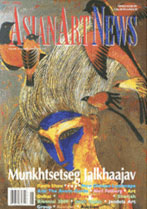 "From The Heart Of Mongolia" By Ian Findlay-Brown
"From The Heart Of Mongolia" By Ian Findlay-Brown
Copyright © Ian Findlay-Brown 2009
When
the communist party gained control of Mongolia in 1921, under the
direction of the Soviet Union, the eradication of Mongolian traditions
and cultural life was swift, brutal, and all consuming. The great
purges of the 1930s saw the destruction of hundreds of monasteries
during which tens of thousands of monks were killed along with
innumerable intellectuals and ordinary people. The cost of ‘progress’
under an oppressive collectivization and class struggle in reshaping
the country into a 20th-century ‘model’ communist state was almost
complete isolation from the rest of the world. And throughout all the
changes (social, cultural, political, and educational) the loss of
identity was intensely felt among Mongolians. (1)
“The great
losses for Mongolians are the great painting traditions of the 17th
century and their philosophy of life,” says Tsendsuren Narangerel,
painter and dean of the decorative art department of the Fine Art
Institute of Mongolia in Ulaanbaatar. “The philosophy of the Mongolian
is their nomadic way of life and respect for nature and the earth. The
worst is that Mongolians not only lost their national art but also the
pride of their culture during the Soviet period.” (2)
For
artists the thirst for new identities has been profound since the
advent of democracy, in the early 1990s. This has informed the best art
made by many of Mongolia’s finest modern artists, many of whom were
educated either at art schools in the Soviet Union or in former Eastern
Bloc countries such as Bulgaria and Czechoslovakia (the Czech Republic
since 1993). At these art schools, as well as Mongolia’s pre-1990s art
institutions, socialist realism dominated the students’ curriculum. (3)
Changing
course has not been easy, especially for older artists. Munkhtsetseg
Jalkhaajav, who is 42, is not one of these. For her, studying art under
the socialist system at the Art Institute in Ulaanbaatar, from 1983 to
1987, and at the Academy of Fine Art and Theater, Minsk, from 1989 to
1993, was so frustrating that she left before graduating. This act
underscores her resolute nature. “During the communist time in Mongolia
and Russia, I only studied good technique and color,” she says. “But
there was not any heart in the teaching.” (4)
Munkhtsetseg
Jalkhaajav was born in 1967 in Ulaanbaatar where her early painting
studies were dominated by a Soviet art curriculum, which she says was
“little more than propaganda.” What she wanted was an education in
which the richness and vitality of Mongolian cultural traditions and a
modern visual sensibility could be combined to represent both her own
psychology and her observations on a rapidly changing society. At the
same time, she wanted to make art that possessed “a physical presence,
colors that are typically Mongolian, and a geometry to the features
that comes from traditional culture. I also wanted a stillness in my
art that reflects something of the stoicism of nomadic Mongolian
culture.”
Munkhtsetseg Jalkhaajav, as a painter and a woman,
believes that Mongolia’s new artistic vision should also heal
emotionally and spiritually. This has always been important to her, but
not always easy. Some of the challenges she has faced in her healing
process are clear in the paintings, works on paper, and soft sculptures
that make up the exhibition The Silence of Healing at the Edge of the
World. The pain of an emerging democracy and the dislocation of
cultural traditions are deeply felt. To address this artists need to
make new art to reflect this altered society. Munkhtsetseg’s art does
this exceptionally well.
The process of healing only became
possible for Munkhtsetseg after her return from Russia, when she
witnessed how democracy and freedom of expression were not only
altering Mongolian society but also changing individuals’ hopes. Today,
she notes, there is refreshing contemporary art that represents true
Mongolian aspirations and self-expression and that it is not
propaganda. Now that there is freedom to make art in whatever way one
desires, social thinking has moved from the collective to the personal.
Munkhtsetseg
found her subject in women -- steely, bare-breasted women -- who
represent a rejection of totalitarianism’s puritanical propaganda in
which women, even though at the forefront of society, never appear to
be equal to men. These women, carefully constructed in the artist’s
mind, are then deconstructed on canvas to represent women’s spiritual
freedom and their relationship to the world around them in all its
complexity. Women in Mongolia, Munkhtsetseg notes, have always been
equal and this is why she doesn’t try to take a feminist point of view.
“I just express what I think and feel. It is up to the viewer to
interpret what they see. Mongolians have always respected women as
equals,” she says. “Women have the right to rule the household and the
state. When men, in the past, went to war, women controlled everything.
In traditional life men had to listen to women. So all my paintings
represent the power of women.”
Woman as her central subject has
given Munkhtsetseg the opportunity to create an uncompromising
narrative through which to explore questions of spirituality, birth and
death, female sexuality, personal disappointment, and motherhood. To
examine these she uses numerous symbols from Mongolia’s rich cultural
heritage. The birds, clothing, children, traditional Mongolian
medicine, legends and myths on the origins of the world, humankind’s
relationship to nature and animals, and the striking traditional
hairstyle known as ehkner us, which means ‘married woman’s hairstyle,’
all inform her
figurative art, recent abstractions, and representational collages and drawings.
The
power flowing from Munkhtsetseg’s bold figures is in stark contrast to
her slight physical presence that hides a steely determination. She
observes and listens intently. Her slim hands exude an appealing
combination of fragility and strength. She wields a brush thick with
paint and tears paper for her collages with equal passion. When the
results are not to her liking, she simply begins again, working until
she is satisfied. When she is happy with the results, she is never
boastful. Indeed, Munkhtsetseg (“Mugi” to her friends) has a sense of
humility about her that is memorable. For all her accomplishments,
since the mid-1980s, she says simply, “It is only during the past five
years that I have considered myself an artist. Before, I only saw
myself as an artist in training.”
Munkhtsetseg’s portraits of
women are not gentle or refined or timid. They are tough, highly
textured, boldly colored studies of characters that exude powerful
emotions. While she speaks clearly to her own culture, she is also
addressing womankind far beyond it. Her commanding protagonists are by
turns also absolutely still and animated by tension in their fluid
geometry. This is accentuated by her use of strong blues, reds, browns,
and greens. This is especially true of her works in which children and
giving birth sit at very heart of her narrative.
One sees this
in such works as Endless Desire (2008), representing the reality of
multiple generations. Reborn (2008), Birth Myth, and Nexus (both 2009)
project the innocence of the mother/child relationship. The dramatic
Spirit of Survival), in which the artist uses a rich green, not only to
emphasize the importance of children as a physical reality but also, as
they sit on leaves that are affixed to the woman’s hair, as dream.
These works confirm some of the major strengths of her art such as her
love for textures and colors.
While these works form a
collective memory of both the place of children and their
life-affirming innocence in the life of a woman and society, they also
show the power and spirituality of womanhood. This memory is
strengthened by traditional and modern imagery and Munkhtsetseg’s own
personal experience of the loss of a child. “The relationship between
tradition and modernity is strongly expressed in her work. One can feel
her soul and energy and power,” Tsendsuren Narangerel, “Children
symbolize the nexus of life. They represent personal love. I have a
son. But I have experienced the loss of a child at birth,” Munkhtsetseg
says. “After my son, I had a miscarriage and could not have another
child, which has affected me deeply. This is why my works are deeply
personal and why my works have helped to heal my spirit.”
While
Munkhtsetseg cites such artists as Kiki Smith, Hans Arp, Louise
Bourgeois, and Yayoi Kusama, as well as the Mongolian sculptor
Zanabazar (1635—1723) as inspirations, she says that none are
influences. The artist says that when sees the work of other artists,
“It makes me reflect on myself because it is very difficult to be
oneself.”
Beyond traditional Mongolian culture and symbolism she
notes that theater design, mural art, and Russian icons have also
played a part in changing her art over the past two decades. And while
her oeuvre is dominated by both figurative and abstract work, she sees
herself merely as an artist, “neither an abstract artist nor a realist.”
If
Munkhtsetseg’s art is neither abstract nor realistic, there is
certainly a case for seeing much of it as tending toward the surreal.
Her symbolism and how she uses it within her paintings and collage
reinforces this idea. Munkhtsetseg has carefully constructed her women
over the past two decades, beginning with a concentration on hair, then
the eyes, the ears, the legs, the hands, and then the breasts; while
the women are often semi-naked, there are rarely erotic elements in her
pictures.
Such careful development was also a revelation for the
artist. “When I had learned to paint all the physical elements of the
body, it felt like my painting had gained a soul,” she says. “It felt
like a living being was being born through the painting and it became
more spiritual as my work moved from the mere physical representation.”
Birds
-- including magpies and skylarks -- in traditional Mongolian medicine
are symbols of one’s heartbeat, and are central to the surreal drama
that is taking place in such works as Pulse (2008), Sacred Offering
(2009), The Gift (2009), and Lung, (2008). In Sacred Offering
Munkhtsetseg’s birds rest in the luxuriant hair of the alien blue-faced
woman, a timeless face, one that reminds the viewer of religious
figures in ikon painting and ancient mural art. This blue – an
important color for Munkhtsetseg, which come from the influence of
Zanabazar -- is also found in her moving work entitled Gazing (2009).
In Pulse the birds are linked to the woman’s veins and are either
drawing blood from her or taking her pulse. In Tangling Hair (2009) the
birds appear to nest in an ornate hairstyle suggestive of tangled
branches. Other symbols of heart and bird at the bottom of the painting
-- to the left and the right -- add to the surreal image.
“In
nomadic culture Mongolians believe that birds are symbols of good and
bad news and they can also be used in fortune telling,” she says.
“Birds have been used in Mongolian and Tibetan traditional anatomy for
centuries. I am inspired by this as birds in my art represent healing,
transfiguration, becoming pregnant, and the pulse of life.”
That
Munkhtsetseg Jalkhaajav’s art is about the power of women --
physically, emotionally, and spiritually -- is clear. With each new
series she builds upon earlier work to make these points more fully as
she matures as an artist. Her use of hair, for example, speaks not only
to female beauty and the power of women, but also to the spiritual and
humanity’s connection with animals. “In traditional Mongolian culture,”
she says, “the hair holds the woman’s spirit and soul. I believe in
this. But hair also represents the abstract cosmic world.”
She
addresses this in her paintings, collages, and drawing through a drama
of color and lyrical line. In Hair Performance: I am Protected (2009)
the hair flows from the head of nude woman on her back, at the top of
the picture, as if it is seeking the earth. In the delicate line
drawing Hair Performance: Hair Ceremony (2009) and the oil Hair
Performance – Roots (2009) the nude figures sit, legs open, at the top
of the painting, their hair flowing gently to the ground seeking to
root itself in the earth. In the oil Nowever (2002), the hair of three
women streams across the picture place taking on the rhythm of a
landscape.
In the early works On The Mountain (2000) and
Messenger (2002) hair is clearly shown as a metaphor for physical
power. The ehkner us hairstyle of the women is made in the image of
powerful goat horns. But here Munkhtsetseg is not only showing power,
but also connecting humankind with the animal world and showing just
how central this is to all life.
Munkhtsetseg is speaking not
about sexuality – though it is certainly an element in her work – but
about how people are rooted to the earth and connected to all natural
and cosmic power. She says that this is especially true about women
whose grasp on matters of life and death, nature and natural
relationships are often more grounded than men’s.
“Women give
birth to men,” she says. “The traditional concept of hair is that it
holds the spirit and soul. So in these works the women are seeking
their connection to nature as the hair seeks to be rooted in the
ground. When the hair is being cut, as in my Liberation Series No 3
(2008) it can be compared to meditation so as to release the mind and
soul of pain.”
Further enhancing the surreal in her work is how
she uses aspects of traditional Mongolian medicine, its spells and
rituals to look beyond the surface of the body. That birds and animals
feature so prominently in her art is not mere affectation. It is
something that is thoroughly of Mongolian as it the belief that animals
can heal humans both physically and mentally.
For Munkhtsetseg
the body is a whole cosmic unit, not merely separate external and
internal worlds to be treated separately: They speak as one in the
natural order of life. “I used to draw organs individually, but now
when I draw them it is as a whole, as an integral part of the whole
body,” she says. “Now, in my art the body has a spirit or a soul,
before it was bits and pieces.”
Munkhtsetseg’s collage technique
is very different from that used in her paintings. In her paintings the
spirit of her figures emerges from beneath the brush, but in collage
she says, “When I create a figure I do it by tearing the paper I use my
hands and it feels like the paper itself creates the figure.”
She
feels that in her collages she can express the ideas of traditional
Mongolian medicine more strongly as she can use ready-made materials
like book pages from medical texts. “For me, it is important that I
make many abstract sketches in advance so that the sketches lead to the
final creation. I can then show how spells and treatments can be used
to change the gender of a child in the womb, using sheep’s wool and
goat’s wool, making a thread of it, and tying it around the body as the
person is reading a mantra.
The collages, in which she utilizes
handmade paper, cloth, pencil, ink, oil, pages from anatomy books, and
recently, photographs, have added immeasurably to Munkhtsetseg’s
artistic vision. There is a unique and disturbing strength to these
works. She has chosen not to look at the external beauty of the female
body, but to highlight the internal. It is inside the body that the
struggle for life takes place, within the pulsing of organs and
breathing skin, from the constant beating of the fragile heart to the
life-giving blood that hurtles through the veins. It is here that
Munkhtsetseg’s cosmic reality takes full flight. Her fine collage
series Tearing Language (2009) not only highlights the cosmic, but also
speak to us as her gateway to the soul.
Works such as Tearing
Language No 2, No 9, and No 13 exemplify just how well Munkhtsetseg
constructs the cliché of the sensual naked woman shown from behind and
then how well she deconstructs it. Her images are from the seductive
poses made by commercial artists who cater to a market that demands
illusion, not truth. Munkhtsetseg understands very well, as her
dramatic paintings show, just how often truth and illusion collide and
become tortured visions.
Tearing Language No 9 is a singularly
powerful example of her collage art. Here we are aware of the muscle,
sinew, and organs and we sense how they work together. What the artist
is clearly saying to the viewer is that beyond the body’s soft skin
lies a confusion of life-giving organs that are not so pretty to look
at. While she often reveals the structure of bones and joints, here she
uses the long plait to become the spine: This is her only gesture to
female beauty. At the same time, she shows us that the organs of our
system have to be healed before we can become whole again.
Munkhtsetseg’s collages reinforce the reality that healing begins for
us on the inside.
Using collage also allows her to show other
aspects of her thoughts and beliefs, from examining shamanistic beliefs
to articulating the simplest gesture of a child. The heavy impasto of
her paintings gives way in the collages to a rougher quality, with a
touch of spontaneity. This makes for a different narrative tone and
perception in her oeuvre. It is as if she is peeling back the skin of
her emotions to let the viewer inside her very thoughts on life, birth,
death, and personal loss.
Although her collages are highly
controlled creations and emotionally and intellectually on a different
artistic reality than her paintings, this does not mean to say that
they are always austere. Far from it, there are touches of wry humor,
too.
Munkhtsetseg’s surreal touch in such paintings as Pulse
(2008), Spirit of Survival (2009), and Sacred Offering (2009) is
carried further in the bird image that is Tearing Language No 5.
(2009). Here Munkhtsetseg displays both fine drawings skills and a
vivid imagination. The bird is realized as an illustration in an
anatomy book about strange beings. The inner workings of the bird are
revealed in magnificent detail: It is part animal, part human. The feet
are human legs and the wings are outstretched human hands; both are
skeletal, the tendon holding the muscle to the bone that adds a
peculiar strength to the skeletal hands. A headless male torso, arms
outstretched, hands clasp a length of human hair, emerges from the
bird’s abdomen. This birth image, which reminds one of mythic
human/animal connections, adds vividly to this surreal work.
There
is something disturbingly obsessive about this work. But then
Munkhtsetseg’s art is not meant to be a pleasant interlude among
sentimental images. It is meant to confront, boldly and questioningly.
In this work she achieves a sense of drama so different from that in
the narrative of her paintings. At the same time, the entire Tearing
Language series makes us realize that her art, like her life, is far
more substantial than the sum of its parts. She makes us aware that
life is also more than simply breathing, loving, and constant struggle.
Such
notions are further examined in Munkhtsetseg’s recent soft sculptures:
I don't tell where I am from, Path, Body as Tangled Hair in
Intermission Space, and Enjoyable Pleasure (all 2009). “I wanted to see
some aspects of my painting in three dimensions,” she says. These works
are another significant step in her exploration of healing through art:
they speak to children, the emotional pain of loss, physical trauma,
and identity.
Although Munkhtsetseg never studied sculpture, she
began to consider it after seeing sculptures by the Japanese artist
Yayoi Kusama in New York in 2001. But her inspiration as a sculptor
also has its roots in Zanabazar’s art. Since childhood, she has admired
his Tara sculptures. Munkhtsetseg’s soft sculptures of sewn silk and
felt, however, are far from these influences. It is clear in these
works that her training in theater design comes into play.
Munkhtsetseg
first makes drawings, then carefully follows these as she sews (a skill
she learned as a young woman). It is a long process. “Sometimes I get
lost along the way. But my mistakes give me good ideas.” Sewing also
gives her the “freedom of working with soft materials. It helps me to
develop my images.”
Monglians love to make things with silk,
including special traditional clothes, deel, for children. “I made it
for my son in 1992. I have always wanted to make something using silk,”
she says. “Sometimes, when I finish a painting, I feel that I have not
expressed all my emotions. So sculpture becomes another emotional level
of my narrative of the woman/child relationship.”
Path, a
silver-colored sculpture of a seated, forlorn faceless baby with its
umbilical chord snaking out from its body, is a powerful work that
suggests the terror of the innocent. This is also true of the
goldcolored I don’t tell where I am from. The multi-armed child is
seated with hands covering eyes, ears, and mouth in the manner of ‘I
have nothing, see nothing, and say nothing.’ Such works have their
origins in paintings such as Spirit of Survival, Nexus, and Birth Myth
(all 2009).
While sculptures such Path and I don’t tell where I
am from suggest something of the pain of birth, they also allude to the
artist’s own personal loss. This is not the case with her sculptures
dealing with contortionists as in silver and gold Enjoyable Pleasure
and in the bold-red group in Body as Tangled Hair in Intermission Space
(both 2009). These two works, with their origins in works such as
Reborn (2008) and Pattern of Nature (2009) speak more to struggle and
survival than birth pangs. Munkhtsetseg’s contortionists appear to
suggest that struggle in life is a constant, a necessity for change and
healing.
“When I am making soft sculpture,” says Munkhtsetseg,
“I feel that I am creating a human body by the Lunar calendar. In the
Lunar calendar the human soul exists in different organs every day. For
example, first the soul exists in the feet; then the soul exists in
knees, and so on.”
Mongolian artists feel their cultural loss
deeply. How do a nation and its people heal in the midst of change?
This is a difficult question to answer, according to Tsendsuren
Narangerel. “When I was abroad, I saw a lot of Mongolian cultural items
in museums. I felt sad about that. The loss of culture is incurable.
Which also means spiritual and material loss,” he says. “We should not
repeat this mistake. For that we have to work hard and to create art.
So in that way art heals.”
Munkhtsetseg Jalkhaajav’s rich
personal narrative is certainly an important statement in the healing
process. Looking at a broad range of her art made since the late 1990s,
one realizes always that for her art is as much about healing as it is
about the art itself. Through this the pain of her loss as a woman is
slowly being alleviated. Her vision is becoming stronger. Her voice is
more confident. Despite this she continues to feel doubtful. It is a
necessary doubt, one that drives her forward to heal and be healed.
“Each year,” says Munkhtsetseg, “I feel I become more of a complete
artist. But even so I always find myself feeling that there is
something missing.” (6)
Notes:
1.
Baabar (Bat-Erdene Batbayar), History of Mongolia, Cambridge, England,
The White Horse Press,1999. The editor Christopher Kaplonski, notes in
his Editor’s Preface, “One of his [Baabar’s] most famous writings, Buu
mart! (Don’t Forget!), written in Moscow in 1988, but not published in
Mongolia until 1990, “was a call to remember Mongolian traditions and
identity in the face of socialism.”
2. Quotations from Tsendsuren
Narangerel are taken from the author’s interview with him at the Fine
Art Institute of Mongolia in Ulaanbaatar on April 17, 2009.
3. This
is an extended and updated version of an earlier essay. See Ian
Findlay, “From The Heart Of Mongolia,” Asian Art News, Volume 19 Number
3, May/June 2009, pages 72—77.
4. Unless otherwise stated quotations
are from interviews with Munkhtsetseg Jalkhaajav conducted by the
author in Ulaanbaatar between April 14 and April 17, 2009.
5.
Zanabazar (1635—1723), also know as Ondor Gegeen, was the First Bogd
Gegeen. He is considered to be the greatest artist of Mongolia.
6.
The author thanks Ms. Delgermaa Ganbat, advocacy Program Coordinator,
the Arts Council of Mongolia, and Ms. Ts. Yuno for their generous help
with interpreting while in Ulaanbaatar.
Copyright © Ian Findlay-Brown 2009
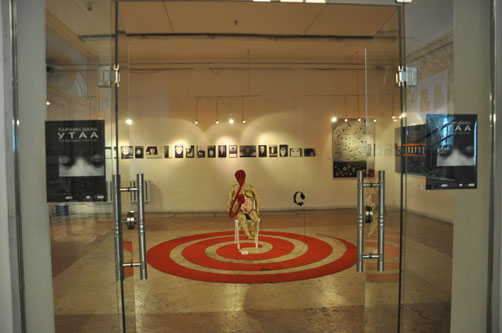 "Tarhin dahi Utaa" Group exhibition in "Ulaan ger" gallery, Ulaanbaatar 2010. Artists: J. Munkhtsetseg (installation) M.Batzorig (graphic), Bu.Badral (video art & painting), Ts.Ariuntugs (video art & installation), Kh.Batbaatar (painting), D.Davaanyam (photo art), B.Nandin-Erdene (collage), A.Bayarmagnai (painting), D.Bayartsetseg (graphic, performance), D.Uuriintuya (mongol zurag - painting).
"Tarhin dahi Utaa" Group exhibition in "Ulaan ger" gallery, Ulaanbaatar 2010. Artists: J. Munkhtsetseg (installation) M.Batzorig (graphic), Bu.Badral (video art & painting), Ts.Ariuntugs (video art & installation), Kh.Batbaatar (painting), D.Davaanyam (photo art), B.Nandin-Erdene (collage), A.Bayarmagnai (painting), D.Bayartsetseg (graphic, performance), D.Uuriintuya (mongol zurag - painting).
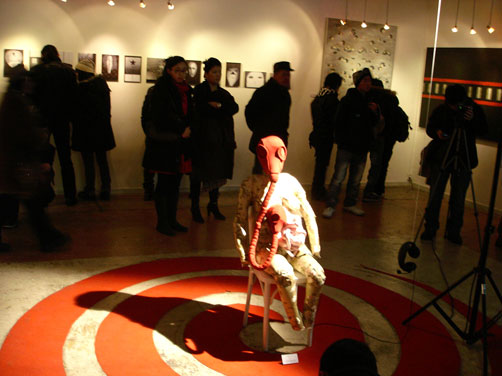 "Tarhin dahi Utaa" (Smoke in the Brain) Group exhibition in "Ulaan ger" (Red Ger) gallery, Ulaanbaatar 2010
"Tarhin dahi Utaa" (Smoke in the Brain) Group exhibition in "Ulaan ger" (Red Ger) gallery, Ulaanbaatar 2010
 "Tarhin dahi Utaa" (Smoke in the Brain) Group exhibition in "Ulaan ger" (Red Ger) gallery, Ulaanbaatar 2010
"Tarhin dahi Utaa" (Smoke in the Brain) Group exhibition in "Ulaan ger" (Red Ger) gallery, Ulaanbaatar 2010
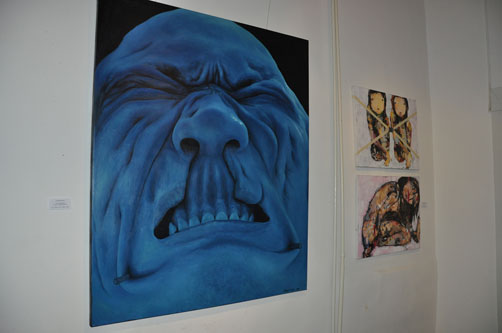 "Tarhin dahi Utaa" (Smoke in the Brain) Group exhibition in "Ulaan ger" (Red Ger) gallery, Ulaanbaatar 2010
"Tarhin dahi Utaa" (Smoke in the Brain) Group exhibition in "Ulaan ger" (Red Ger) gallery, Ulaanbaatar 2010
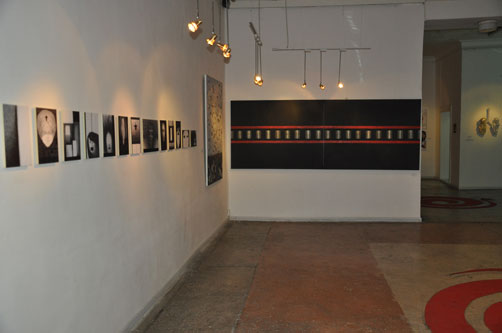 "Tarhin dahi Utaa" (Smoke in the Brain) Group exhibition in "Ulaan ger" (Red Ger) gallery, Ulaanbaatar 2010
"Tarhin dahi Utaa" (Smoke in the Brain) Group exhibition in "Ulaan ger" (Red Ger) gallery, Ulaanbaatar 2010
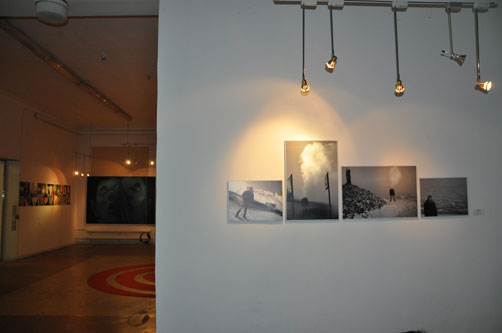 "Tarhin dahi Utaa" (Smoke in the Brain) Group exhibition in "Ulaan ger" (Red Ger) gallery, Ulaanbaatar 2010
"Tarhin dahi Utaa" (Smoke in the Brain) Group exhibition in "Ulaan ger" (Red Ger) gallery, Ulaanbaatar 2010
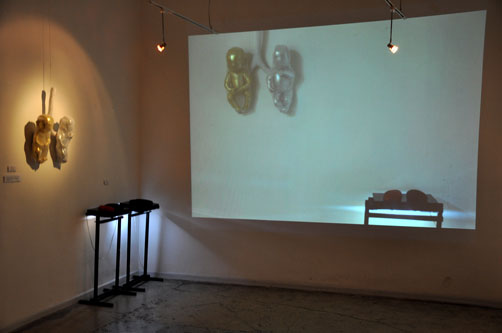 "Tarhin dahi Utaa" (Smoke in the Brain) Group exhibition in "Ulaan ger" (Red Ger) gallery, Ulaanbaatar 2010
"Tarhin dahi Utaa" (Smoke in the Brain) Group exhibition in "Ulaan ger" (Red Ger) gallery, Ulaanbaatar 2010
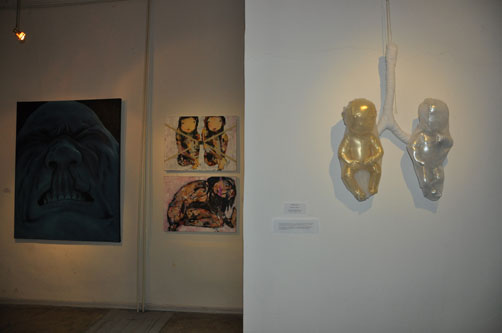 "Tarhin dahi Utaa" (Smoke in the Brain) Group exhibition in "Ulaan ger" (Red Ger) gallery, Ulaanbaatar 2010
"Tarhin dahi Utaa" (Smoke in the Brain) Group exhibition in "Ulaan ger" (Red Ger) gallery, Ulaanbaatar 2010
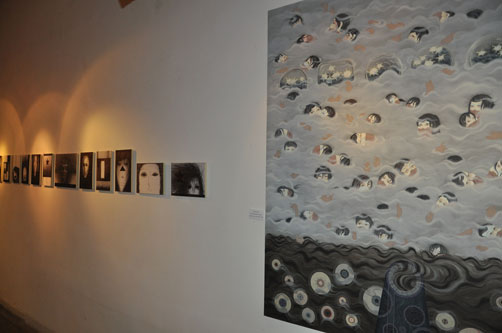 "Tarhin dahi Utaa" (Smoke in the Brain) Group exhibition in "Ulaan ger" (Red Ger) gallery, Ulaanbaatar 2010
"Tarhin dahi Utaa" (Smoke in the Brain) Group exhibition in "Ulaan ger" (Red Ger) gallery, Ulaanbaatar 2010
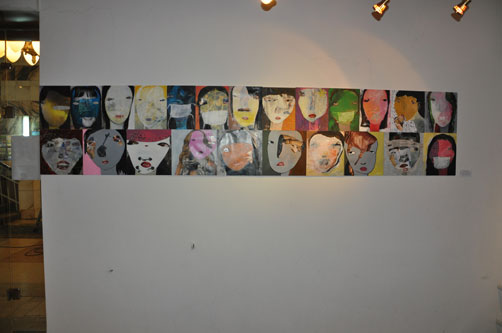 "Tarhin dahi Utaa" (Smoke in the Brain) Group exhibition in "Ulaan ger" (Red Ger) gallery, Ulaanbaatar 2010
"Tarhin dahi Utaa" (Smoke in the Brain) Group exhibition in "Ulaan ger" (Red Ger) gallery, Ulaanbaatar 2010
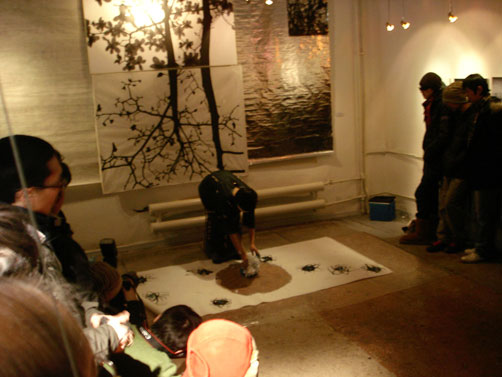 "Tarhin dahi Utaa" (Smoke in the Brain) Group exhibition in "Ulaan ger" (Red Ger) gallery, Ulaanbaatar 2010
"Tarhin dahi Utaa" (Smoke in the Brain) Group exhibition in "Ulaan ger" (Red Ger) gallery, Ulaanbaatar 2010
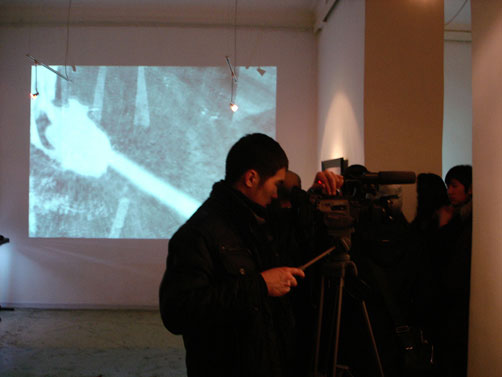 "Tarhin dahi Utaa" (Smoke in the Brain) Group exhibition in "Ulaan ger" (Red Ger) gallery, Ulaanbaatar 2010.
"Tarhin dahi Utaa" (Smoke in the Brain) Group exhibition in "Ulaan ger" (Red Ger) gallery, Ulaanbaatar 2010.
Back
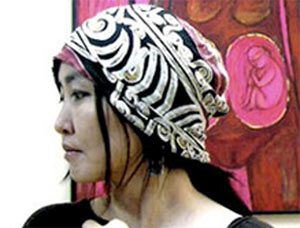 Munkhtsetseg
Javkhaajav
Munkhtsetseg
Javkhaajav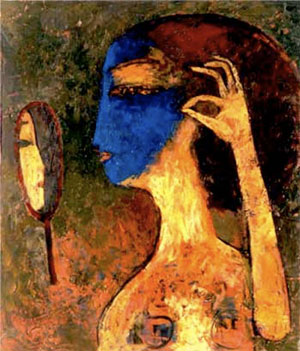
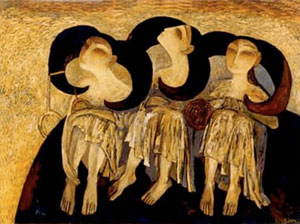

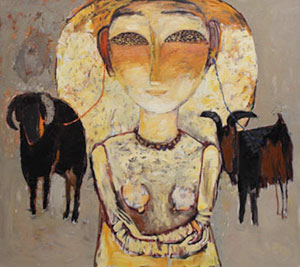
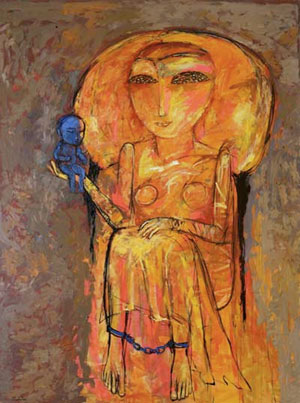
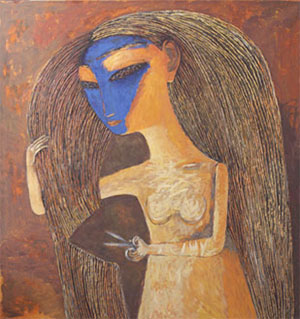


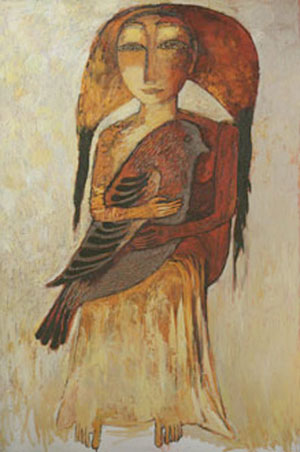
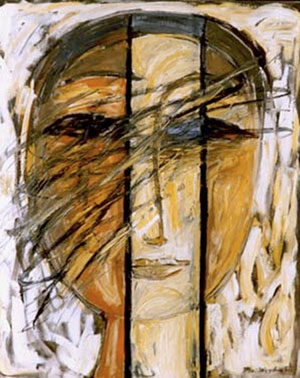

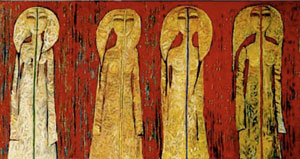

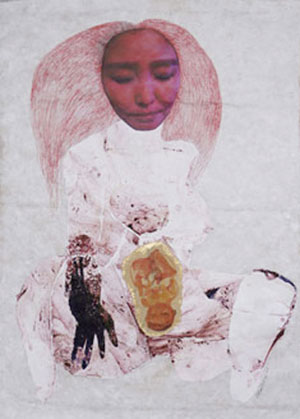
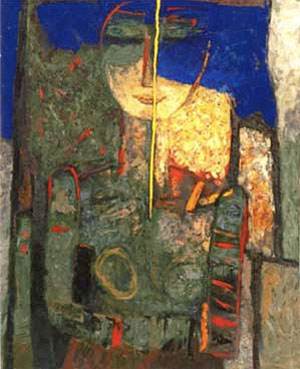
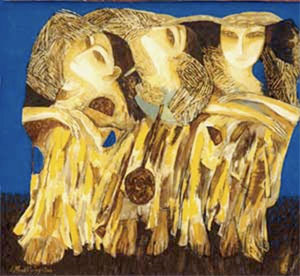
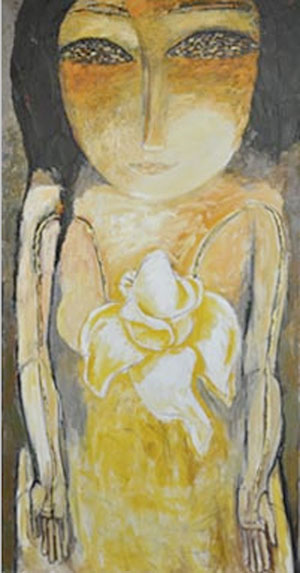
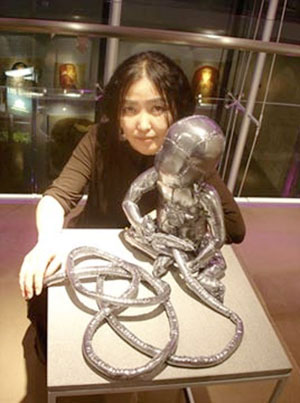

 "Tarhin dahi Utaa" Group exhibition in "Ulaan ger" gallery, Ulaanbaatar 2010. Artists:
"Tarhin dahi Utaa" Group exhibition in "Ulaan ger" gallery, Ulaanbaatar 2010. Artists:  "Tarhin dahi Utaa" (Smoke in the Brain) Group exhibition in "Ulaan ger" (Red Ger) gallery, Ulaanbaatar 2010
"Tarhin dahi Utaa" (Smoke in the Brain) Group exhibition in "Ulaan ger" (Red Ger) gallery, Ulaanbaatar 2010 "Tarhin dahi Utaa" (Smoke in the Brain) Group exhibition in "Ulaan ger" (Red Ger) gallery, Ulaanbaatar 2010
"Tarhin dahi Utaa" (Smoke in the Brain) Group exhibition in "Ulaan ger" (Red Ger) gallery, Ulaanbaatar 2010 "Tarhin dahi Utaa" (Smoke in the Brain) Group exhibition in "Ulaan ger" (Red Ger) gallery, Ulaanbaatar 2010
"Tarhin dahi Utaa" (Smoke in the Brain) Group exhibition in "Ulaan ger" (Red Ger) gallery, Ulaanbaatar 2010 "Tarhin dahi Utaa" (Smoke in the Brain) Group exhibition in "Ulaan ger" (Red Ger) gallery, Ulaanbaatar 2010
"Tarhin dahi Utaa" (Smoke in the Brain) Group exhibition in "Ulaan ger" (Red Ger) gallery, Ulaanbaatar 2010 "Tarhin dahi Utaa" (Smoke in the Brain) Group exhibition in "Ulaan ger" (Red Ger) gallery, Ulaanbaatar 2010
"Tarhin dahi Utaa" (Smoke in the Brain) Group exhibition in "Ulaan ger" (Red Ger) gallery, Ulaanbaatar 2010 "Tarhin dahi Utaa" (Smoke in the Brain) Group exhibition in "Ulaan ger" (Red Ger) gallery, Ulaanbaatar 2010
"Tarhin dahi Utaa" (Smoke in the Brain) Group exhibition in "Ulaan ger" (Red Ger) gallery, Ulaanbaatar 2010 "Tarhin dahi Utaa" (Smoke in the Brain) Group exhibition in "Ulaan ger" (Red Ger) gallery, Ulaanbaatar 2010
"Tarhin dahi Utaa" (Smoke in the Brain) Group exhibition in "Ulaan ger" (Red Ger) gallery, Ulaanbaatar 2010 "Tarhin dahi Utaa" (Smoke in the Brain) Group exhibition in "Ulaan ger" (Red Ger) gallery, Ulaanbaatar 2010
"Tarhin dahi Utaa" (Smoke in the Brain) Group exhibition in "Ulaan ger" (Red Ger) gallery, Ulaanbaatar 2010 "Tarhin dahi Utaa" (Smoke in the Brain) Group exhibition in "Ulaan ger" (Red Ger) gallery, Ulaanbaatar 2010
"Tarhin dahi Utaa" (Smoke in the Brain) Group exhibition in "Ulaan ger" (Red Ger) gallery, Ulaanbaatar 2010 "Tarhin dahi Utaa" (Smoke in the Brain) Group exhibition in "Ulaan ger" (Red Ger) gallery, Ulaanbaatar 2010
"Tarhin dahi Utaa" (Smoke in the Brain) Group exhibition in "Ulaan ger" (Red Ger) gallery, Ulaanbaatar 2010 "Tarhin dahi Utaa" (Smoke in the Brain) Group exhibition in "Ulaan ger" (Red Ger) gallery, Ulaanbaatar 2010.
"Tarhin dahi Utaa" (Smoke in the Brain) Group exhibition in "Ulaan ger" (Red Ger) gallery, Ulaanbaatar 2010.